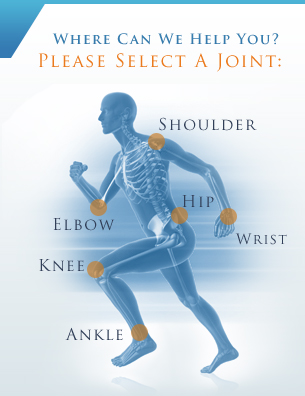
Sports Medicine
 Sports medicine is a subspecialty of orthopedics that deals with the prevention, diagnosis, treatment and rehabilitation of injuries suffered during athletic activity. The goal of treatment is to heal and rehabilitate the injury so patients can return to their favorite activities quickly, whether it's Little League, recreational play or a high school, college or professional sport.
Sports medicine is a subspecialty of orthopedics that deals with the prevention, diagnosis, treatment and rehabilitation of injuries suffered during athletic activity. The goal of treatment is to heal and rehabilitate the injury so patients can return to their favorite activities quickly, whether it's Little League, recreational play or a high school, college or professional sport.
Because of the frequent use, wear-and-tear and risk of a fall or accident associated with sports activities, athletes are often susceptible to orthopedic injuries, including a stress fracture, chronic pain, or a tearing or stretching of internal structures. Different activities place different areas at a higher risk for damage, so it's important to take the necessary precautions to protect yourself while playing sports. Treatment for these conditions may involve surgery, orthotics, physical therapy and rest.
Specialized Care
As with a sports team, there are many physicians who work together to help the patient regain maximum use of the injured limb or joint. "Players" on the team are typically the physician, orthopedic surgeon, rehabilitation specialist, athletic trainer and physical therapist - and the patient him/herself. Our doctors have specialized training in the diagnosis, treatment and prevention of sports injuries, and can help athletes return to their favorite activities as quickly as possible through the most advanced, minimally invasive treatments available.
Common injuries treated include:
- ACL Tears
- Compartment Syndrome
- Fractures
- Heat Exhaustion
- Muscle Contusions (Bruise)
- Muscle Cramps
- Shin Splints
- Sprains & Strains
- Stress Fractures
- Torn Tendons & Ligaments
It is important to seek proper medical care at the first sign of a sports injury, as continued use and activity can lead to even more damage. We understand your desire to return to physical activity as soon as possible, and offer a wide range of treatment options to heal your injury and protect you from future injuries as well.
Arthroscopy
 Arthroscopy is a minimally invasive procedure that allows doctors to diagnose and sometimes treat joint injuries and disease through small incisions in the skin. It is often performed to confirm a diagnosis made after a physical examination and other imaging tests such as MRI, CT scan or X-rays. During an arthroscopic procedure, a thin fiberoptic light, magnifying lens and tiny television camera are inserted into the problem area, allowing the doctor to examine the joint in great detail.
Arthroscopy is a minimally invasive procedure that allows doctors to diagnose and sometimes treat joint injuries and disease through small incisions in the skin. It is often performed to confirm a diagnosis made after a physical examination and other imaging tests such as MRI, CT scan or X-rays. During an arthroscopic procedure, a thin fiberoptic light, magnifying lens and tiny television camera are inserted into the problem area, allowing the doctor to examine the joint in great detail.
For some patients it is then possible to treat the problem using this approach or with a combination of arthroscopic and "open" surgery. Sports injuries are often repairable with arthroscopy. Tendon tears in the knee are frequently repaired in this way. Other potentially treatable injuries include torn cartilage or ligaments, inflamed joint lining, carpal tunnel syndrome, rotator cuff tears, and loose bone or cartilage.
Because it is minimally invasive, arthroscopy offers many benefits to the patient over traditional surgery:
- No cutting of muscles or tendons
- Less bleeding during surgery
- Less scarring
- Smaller incisions
- Faster recovery and return to regular activities
- Faster and more comfortable rehabilitation
Arthroscopy is not appropriate for every patient. Your doctor will discuss the diagnostic and treatment options that are best for you.
Prevention
In order to prevent sports injuries from occurring, it is important for athletes to take care of themselves before, during and after physical activity. This helps to ensure long-term athletic health. Some of the most effective injury prevention tips include:
- Staying hydrated
- Taking time to rest
- Don't work out on an empty stomach
- Warm up before exercising
- Gradually increasing activity level
 Athletes should see a doctor on a regular basis to ensure that they are performing at their peak level and to detect any problems in their earliest stages. Continuing to exercise or play sports with an injury can significantly worsen the severity of the condition.
Athletes should see a doctor on a regular basis to ensure that they are performing at their peak level and to detect any problems in their earliest stages. Continuing to exercise or play sports with an injury can significantly worsen the severity of the condition.
To learn more about our sports medicine services, please call us today to schedule an appointment with one of our specialists.









